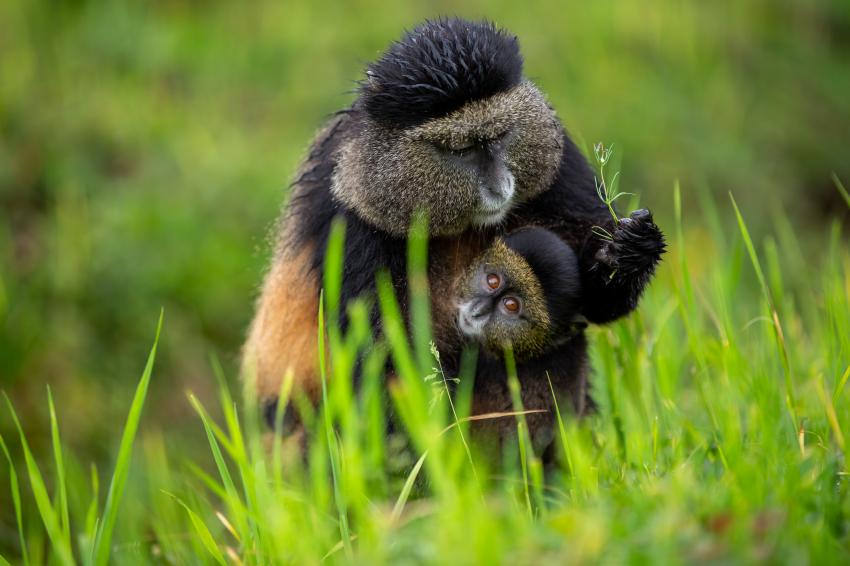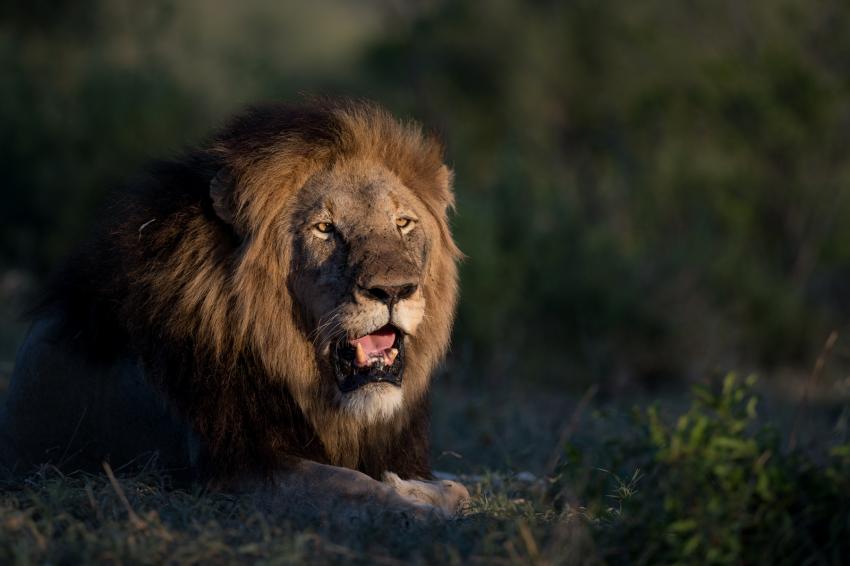The release of the new Walt Disney Pictures film “The Lion King” is making waves across the world, with this version being a photorealistic computer-animated remake of the 1994 animated film. It stars big names such as Donald Glover, John Oliver and Beyonce, with their distinctive voices bringing the story of Simba to life. This young lion is faced with embracing his new role as the rightful king of his native lands after his father, Mufasa, is killed at the hands of his evil uncle, Scar.
But with half of Africa’s real-life lions having disappeared since “The Lion King” was first released 25 years ago, the fate of these “Kings of the Savannah” is less than certain. In response, Disney has initiated a global conservation campaign “Protect the Pride” that will be working with The Lion Recovery Fund as they embark on a mission to double the number of wild lions by 2050.
The Lion Recovery Fund (LRF) supports innovative projects across Africa that are helping to recover and restore lion habitat. They currently support 10 different projects in Tanzania, which is home to some of Africa’s most iconic lion-viewing destinations. Aside from donating to the Lion Recovery Fund, one of the best ways you can ensure the survival of these majestic creatures is to support local conservation initiatives on the ground.
This means jumping aboard a flight to East Africa and heading out on safari to see the animals featured in “The Lion King” with your own eyes. While the film isn’t set in any particular country (and the animal characters hail from across the African continent), Kenya and Tanzania safaris offer the best chance of seeing most of the characters in the wild.
“Simba", “Nala", “Mufasa”, “Sarabi" and “Scar” - Lions (Panthera Leo)

At the centre of the story are (of course) the lions, which are one of the most iconic animal species in Africa. Heroic “Simba" is voiced by Donald Glover and “Nala" by Beyonce while James Earl Jones plays “Mufasa”, Alfre Woodard is “Sarabi” and Chiwetel Ejiofor is devious “Scar”. You might not know but “Simba” is the Swahili word for lion and “Mufasa” is a Manazoto word for king.
Lion sightings are common in all major Tanzanian and Kenyan parks, as well as in Rwanda’s Queen Elizabeth and Murchison Falls National Park, and Rwanda’s Akagera National Park.Tanzania’s Serengeti National Park boasts one of the largest populations of lions in Africa (around 3,000 are currently estimated to live there), making it one of the best places to see them.
These apex predators are one of the “Big Five” - animals that most Tanzania safari visitors want to tick off their list. While you’re most likely to see a pride lazing in the sun, experiencing a lion “kill” is an incredible thrill, with all the anticipation that comes before as they stealthily stalk their prey.
“Rafiki" - Mandrill (Mandrillus sphinx)

“Rafiki” is often referred to as a baboon but he is, in fact, a mandrill, with these Old World monkeys native to the tropical rainforests of West Africa. It’s distinguished by its elongated muzzle with a red stripe down the middle and blue ridges protruding on each side. Even Charles Darwin was impressed, writing in “The Descent of Man”: "no other member in the whole class of mammals is coloured in so extraordinary a manner as the adult male mandrills”.
Female mandrills travel in large “hordes” that can number in the hundreds while males tend to live a more solitary lifestyle and only approach when females are ready to mate. Deforestation and hunting for bushmeat are both threatening the survival of the mandrill, which is considered vulnerable by the IUCN.
If you want to see mandrills in the wild, you’ll need to head to Gabon, Equatorial Guinea, Cameroon, Nigeria or the Congo. Those in East Africa on a Serengeti migration safari can keep their eyes peeled for similar-looking yellow and olive baboons that are found in most of Kenya and Tanzania’s parks.
“Shenzi", “Kamara” and “Azizi" - Spotted Hyenas (Crocuta crocuta)

Also known as “laughing hyenas”, these three spotted hyenas play “Scar’s” sidekicks in “The Lion King” film. But despite their portrayal as incompetent and unintelligent, hyenas are actually among the most socially complex carnivores on the savannah. They’re native to Sub-Saharan Africa and can be found in large numbers in both the Serengeti National Park and Ngorongoro Crater, as well as in Kenya’s Maasai Mara.
Spotted hyenas travel and hunt in large, matriarchal “clans” where females play the dominant role. But they are openly competitive (rather than cooperative) when it comes to feeding and mating. They have proven to be one of the most successful species on the continent, with the ability to adapt to changing conditions and be opportunistic in not only hunting but also scavenging for food. While Western culture often depicts hyenas as cowardly, in African folklore they are believed to be greedy and powerful.
“Pumbaa” - Common Warthog (Phacochoerus Africanus)

Seth Rogan plays the voice of “Pumbaa”, a common warthog, in the 2019 remake of “The Lion King”. It probably comes as no surprise that common warthogs are a wild member of the pig family and they love to wallow in mud to cool themselves down in the heat of the African sun. They’re instantly recognisable due to their two pairs of tusks that protrude from the mouth and they can curve 90 degrees or more backwards as they grow!
Common warthogs are frequently spotted on Kenya and Tanzania tours, with all major national parks in both countries having populations. While male warthogs tend to be quite solitary (like in the film), the females gather in groups with their young. They’re known to live in burrows, with the mother pushing her piglets in first before reversing in behind, ready to defend in case of danger.
“Timon” - Meerkat (Suricata suricatta)

Despite their name, meerkats aren’t related to cats at all but are a member of the mongoose family. They’re native to Southern African countries and can frequently be seen on safari in Botswana’s Kalahari Desert, the Namib Desert and South Africa. Meerkats are highly sociable animals that group together in “mobs” or “gangs” and are famed for the distinctive way they stand on their hind legs to see what’s going on.
Most meerkat clans contain around 20 individuals but you can find super-families of 50 or more members. However, the patterns of stripes seen on their coats are unique to each individual so (if you look closely) you can tell them apart! If you look at the underside of a meerkat, you’ll notice that it has a sparsely covered area that’s used to absorb heat in the chilly early mornings as the animal stands on its rear legs.
“Zazu" - Red-Billed Hornbill (Tockus erythrorhynchus)

Originally voiced by Rowan Atkinson (and John Oliver in the recent remake), “Zazu” is Simba’s knowledgeable British advisor. He’s actually a red-billed hornbill, which is one of Africa’s most recognisable species of birds and found in the savannah and woodlands of Sub-Saharan Africa. There are five distinct subspecies, with all exhibiting a whitish belly and neck with a grey upper and a long curved red bill.
One of their unique behavioural traits is that the female lays her eggs in a tree hole, then blocks the nest off with a plaster made from mud, droppings and fruit pulp. A narrow hole is left open so the male can transfer food to the mother and chicks, who will eventually break through the plaster when they’re too big for the nest. If you want to see red-billed hornbills in the wild, Northern and Tanzanian varieties can both be spotted on a Tanzania safari tour in Lake Manyara and Tarangire National Parks.

 1-321-766-6821
1-321-766-6821 









